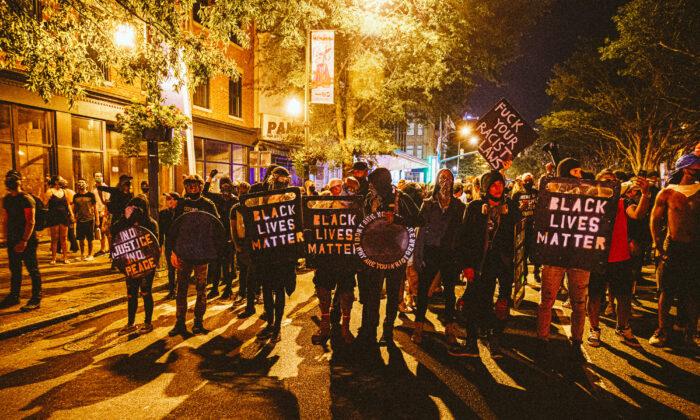But a closer look at the data reveals a more complicated picture. Some of the biggest increases in anti-black hate crimes occurred in Democratic Party strongholds yet, perhaps surprisingly, almost no increases were reported in major cities riven by the racially tinged protests and riots after George Floyd’s murder. It’s no surprise, then, that experts caution against using these numbers to claim an epidemic of anti-black crime—both because of the FBI data’s limitations, as well as the small absolute and relative size of the reported increase.
What was the nature of these reported crimes? Most of the anti-black offenses recorded by the FBI in 2020 were acts of intimidation and vandalism; roughly 1,200 (approximately 30 percent) involved violence. One bias-motivated crime is too many, of course, but the number of reported black hate-crime victims pales in comparison to the reported black victims of other crimes.
Charles Lehman, a fellow at Manhattan Institute and an expert on policing and public safety, told RealClearInvestigations that one reason the number of reported anti-black hate crimes varies significantly across states is that state and local police departments differ in how they classify criminal incidents. In other words, some states are more willing than others to label certain criminal incidents as hate crimes. State laws, too, vary with respect to hate crimes, which can affect the types of incidents that are ultimately reported as such. Lehman pointed to the disparity between Alabama and Arizona as an illustrative example, noting that Alabama has more than twice as many black residents as Arizona but recorded only seven anti-black hate incidents in 2020 compared with Arizona’s 124.
City-level data complicates the story further. Several solidly blue cities that figured prominently in the summer’s protests—Minneapolis, Portland, New York, Kenosha, Seattle, Washington, D.C., Atlanta, and Chicago—did not record meaningful increases in anti-black hate crimes between 2019 and 2020. Minneapolis recorded nine anti-black hate incidents in 2020 after failing to report in 2019. Portland and New York City each had two additional reported anti-black hate incidents between 2019 and 2020; Seattle’s total fell from 84 in 2019 to 52 in 2020. Chicago had five total reported incidents in 2020, down from seven in 2019. Kenosha and Atlanta recorded zero incidents in both 2019 and 2020.
Brian Levin, director of the Center for the Study of Hate and Extremism at California State University, San Bernardino, cautioned that municipal hate crime data can be imperfect.
“The problem is, when you get to a place like Kenosha, or some other places, they have no levels of reporting. During these kinds of protests, when 911 systems are overwhelmed, you may not get all those [hate crime] reports in. In addition, there are issues with regard to trust [with] those police departments,” Levin told RealClearInvestigations.
Sample size is also a significant issue with hate crime data. The relatively small number of anti-black hate crimes reported annually makes it difficult to distinguish genuine trends in the data from random noise.
“[The hate crimes dataset] is also the most under-reported UCR dataset with most agencies not reporting any hate crimes to the FBI. This leads to huge gaps in the data with some states having zero agencies report crime, agencies reporting some bias motivations but not others, [and] agencies reporting some years but not others,” he said. “While these problems exist for all of the UCR datasets, it is most severe in this data. This problem is exacerbated by hate crimes being rare even in agencies that report them—with such rare events, even minor changes in which agencies report or which types of offenses they include can have large effects.”
Lehman echoed Kaplan’s concerns about underreporting, noting that the “number of jurisdictions that actually report [hate crimes] at all is small and varies wildly, and people’s willingness to report also varies significantly.”
“We were having more hate crimes in Eugene, Oregon, than in multiple Southern states combined for a while,” he said.
The reporting disparities across states and localities make it difficult to draw meaningful conclusions about reported hate crime data. The nebulous nature of “hate”—most crimes involve some element of malice, after all—adds to the challenge. Despite these limitations, Lehman argued that the reported surge in anti-black hate crimes warrants federal attention.
“I think it warrants serious attention,” he said. “In absolute terms, non-hate crimes are a much bigger deal, and I'd prefer limited resources go there. But we should always take it seriously when there’s a spike in heinous offenses, and I think hate crimes qualify.”



